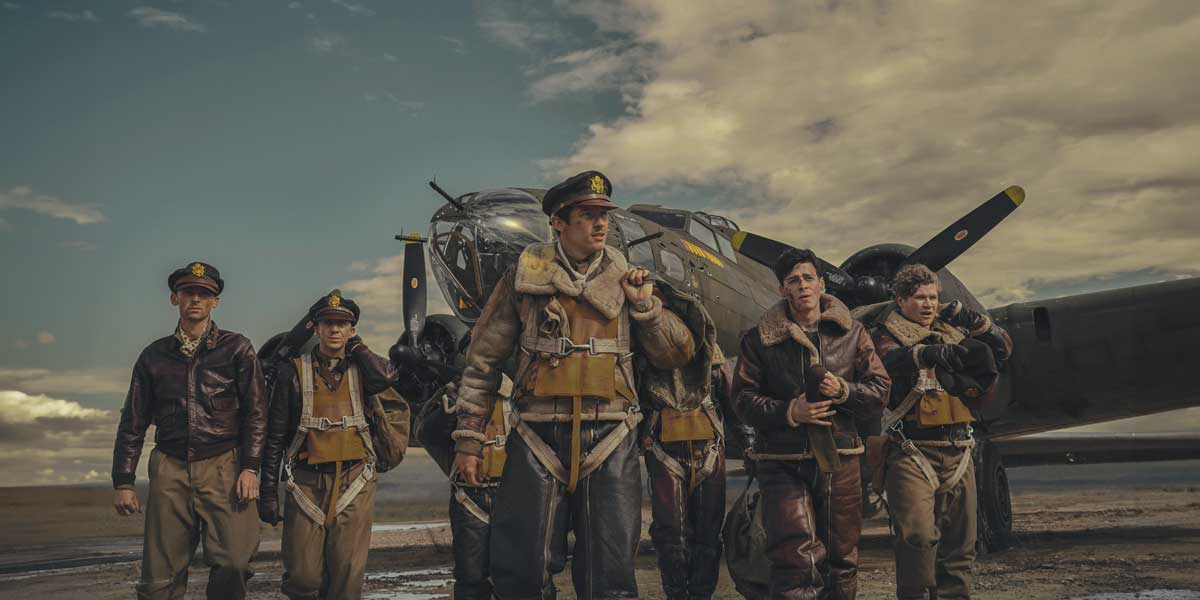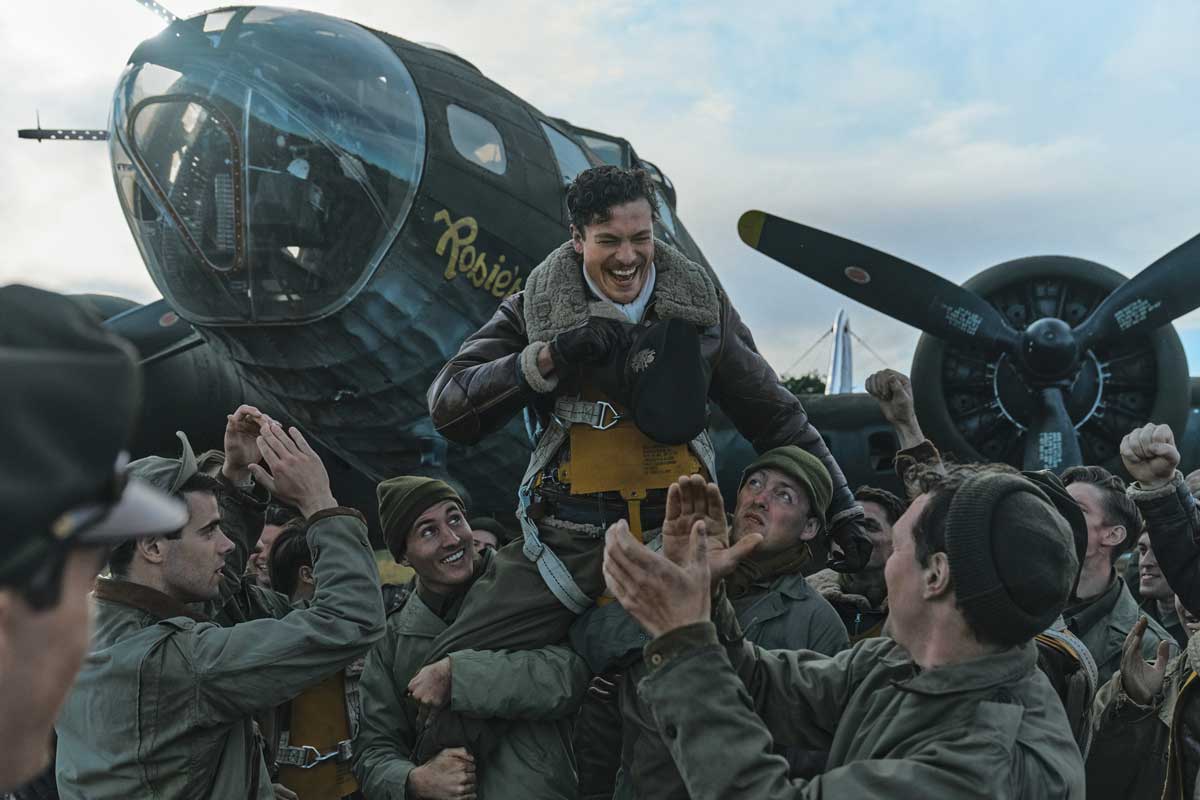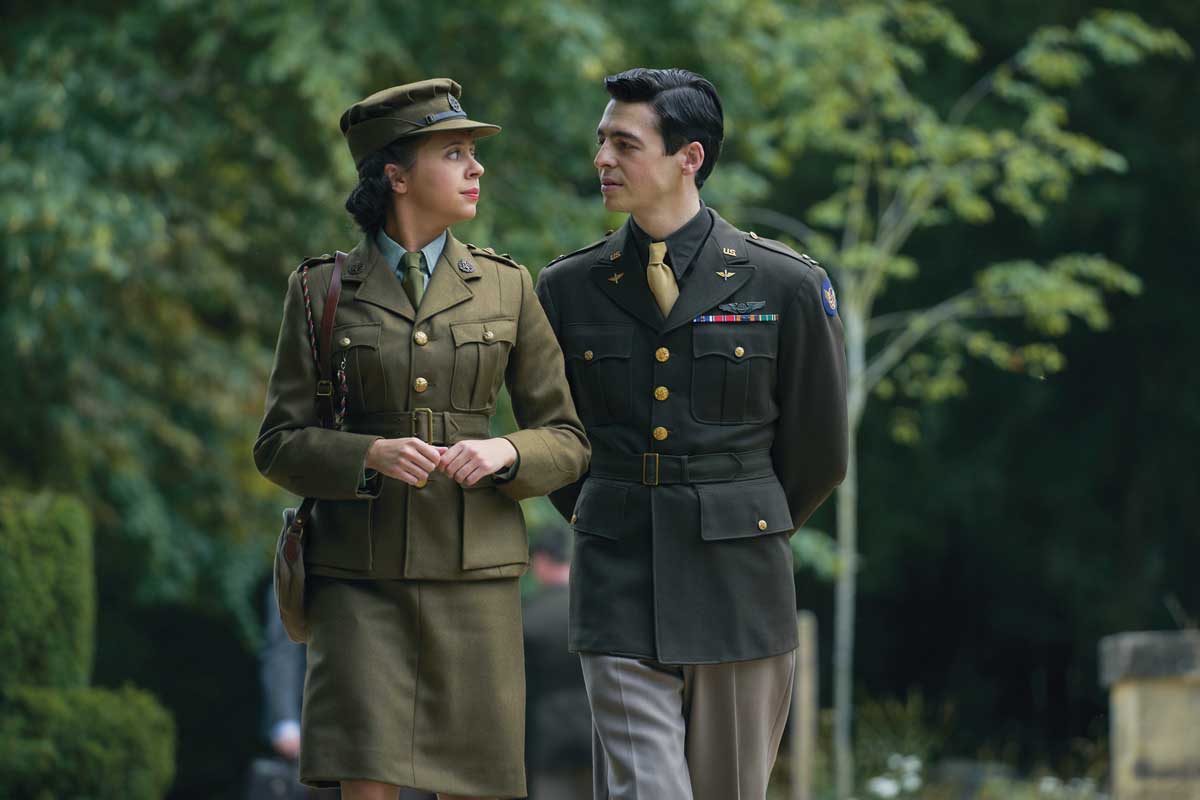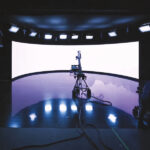
Masters of the Air
Posted on Apr 6, 2024 by Samara Husbands
A wing and a prayer
Bringing together a phenomenal roster of talent, Masters of the Air tells the story of the men of the Eighth Air Force and their role in defeating Nazi Germany. Cinematographer Richard Rutkowski takes Will Lawrence behind the scenes
Images Apple TV+
Working on the Apple TV+ World War II action-drama Masters of the Air provided DOP Richard Rutkowski with a host of special memories, but one in particular stands out.
After shooting the series’ penultimate episode, which introduces the iconic Tuskegee Airmen and their red-tailed P-51 fighters, Rutkowski – a trained pilot – clambered into the cockpit of one of the 76-year-old aircraft and took to the skies.
“One of the P-51s was a training plane that was used to train the airmen back in the forties,” he begins, “and contrary to what you might think of an old plane, it was so easy to fly. It’s cleverly designed, well balanced and so overpowered – like riding the fastest motorcycle you’ve ever been on. We could flip her over and come right back around to get level again.”
Rutkowski’s enthusiasm is palpable: his passion for the subject and craft is clear as he recalls the time spent in England filming episodes 7 and 8 of the nine-part series, executive produced by Steven Spielberg and Tom Hanks as a companion to Band of Brothers (2001) and The Pacific (2010).
Created by John Shiban and John Orloff, the show tells the story of the 100th Bomb Group – dubbed the Bloody Hundredth – a USAF division that flew B-17 Flying Fortresses from their base at Thorpe Abbotts near Norfolk during WWII. It is drawn from the book of the same name by Donald L Miller with No Time to Die helmer, Cary Joji Fukunaga, directing the first four episodes, setting the tone for the series alongside cinematographer Adam Arkapaw.
Rutkowski’s two instalments are directed by Dee Rees with whom he worked on 2017’s Mudbound.
“My role on Mudbound was fairly small,” continues Rutkowski. “I had filmed parts of the Mudbound aircraft scenes for Dee, getting the aircraft to look like they’re flying over Europe for some of our lead characters. Dee had remembered me from that and brought me onto this. She was my first point of contact for the content, style and ambition of the show.”
Rees and Rutkowski’s portion of the show is full to the brim with enthusiasm and uniqueness. The episodes connect scenes set in England – on the Thorpe Abbotts airbase and in London – as well as France and Poland – at the prisoner of war camp Stalag Luft III.
The episodes also take us to Ramitelli on Italy’s Adriatic coast, home to the Tuskegee Airmen.
This group of African-American pilots, including the 332nd Fighter Group or Red Tails, famously adorned the tails and noses of their aircraft with crimson paint.
Episode 8 features a thrilling Red Tails attack sequence, culminating in the shooting down of several fighters and the subsequent incarceration of the airmen.
“Dee and I had the crossover between our airmen at Thorpe Abbotts and the Red Tails,” explains Rutkowski, who has previously earned much critical acclaim for his photography on the early seasons of the Cold War spy drama The Americans, and for his camerawork on the wartime drama Manhattan (which garnered two ASC Award nominations for best cinematography).
“They come together at the POW camp. That’s the site where integration begins for the Tuskegee Airmen and that felt like a huge lift of the script to perform. Dee worked very hard on those scenes with John Orloff and she brought a lot more to that story.” Rees is also a very adroit camera choreographer: “She would often sketch out the coverage for scenes way in advance of the shoot day,” he adds. “She is a terrific researcher.”
Indeed, her research uncovered the memoirs and hand drawings of Lieutenant Colonel Alexander Jefferson, a Tuskegee Airman who chronicled his time in the USAF at Ramitelli and as a POW. “He actually drew many of the frames that we emulate inside the POW camp,” Rutkowski explains. “His drawings were incredibly detailed, even down to the kind of cans that would be around, the wax candles used, the storage they had and how the tables and chairs were arranged in the barracks.”
Jefferson, who was a second lieutenant at the time, and his artwork feature prominently in episode 8 (played by Branden Cook). “His drawings also showed that it was a grim lifestyle,” continues Rutkowski. “The conditions were extremely claustrophobic with very low ceilings – not at all like the expansive spaces in a Hollywood POW camp.”
Stalag Luft III was the camp from which Allied airmen fled in the WWII prison break depicted in The Great Escape (which is referenced in episode 7). “But when we looked at films like that, everybody’s uniform is too nice and their shoes aren’t muddy. We needed it to be more accurate.”
The desire for authenticity extended to all aspects of the shoot, including the action sequences with the Flying Fortresses, the P-40 fighter-bombers and the impressive P-51s. “The scenes in which we are in the air with multiple aircraft at once are entirely CGI created,” says the cinematographer. “They took years and were very complex.
“However, we shot a fair amount of air-to-air photography with two working P-51s ahead of time. We had an under-wing camera and made some very cool frames and manoeuvres with them. They were flying in such close proximity, you could hear them inside our cabin. Those shots then became modelling to help the CGI artists.
“It was really quite complex to storyboard and realise these aerial sequences,” he says. “You have to coordinate a CGI plane coming at you with a shot of the actor in the cockpit, sometimes on a volume and sometimes against blue; then you had to organise their ejection and parachute landing. There were a lot of pieces to the puzzle.”
Another challenge for Rutkowski came in the form of filming scenes set in Thorpe Abbotts, Stalag Luft III and Ramitelli all using the same location: RAF Abingdon in Oxfordshire. “We were setting these locations up across from buildings we were already using as the British airbase,” he remembers.
He also had to create the atmosphere of the Mediterranean in the middle of the English countryside. “I did some tests ahead of principal photography and reset a colour look. In the case of Italy, I added a slight antique suede filter,” he says. “That gave us an ochre, burnished look; it also helped with the uplift on the faces of the African-American flyers. They were so brave and gung-ho and we wanted to reflect that with an uplifted, warm look.
“To make it more like Italy, we needed to take the greens out of the foliage. It was a complete work, involving the art department, choosing a new look and monitoring it through the dailies and into final colouring.
“It was such a wonderful project. We’re at the tail-end of the first-hand knowledge of what it was like. To honour these men is just fantastic.”
This feature was first published in the April 2024 issue of Definition.

















